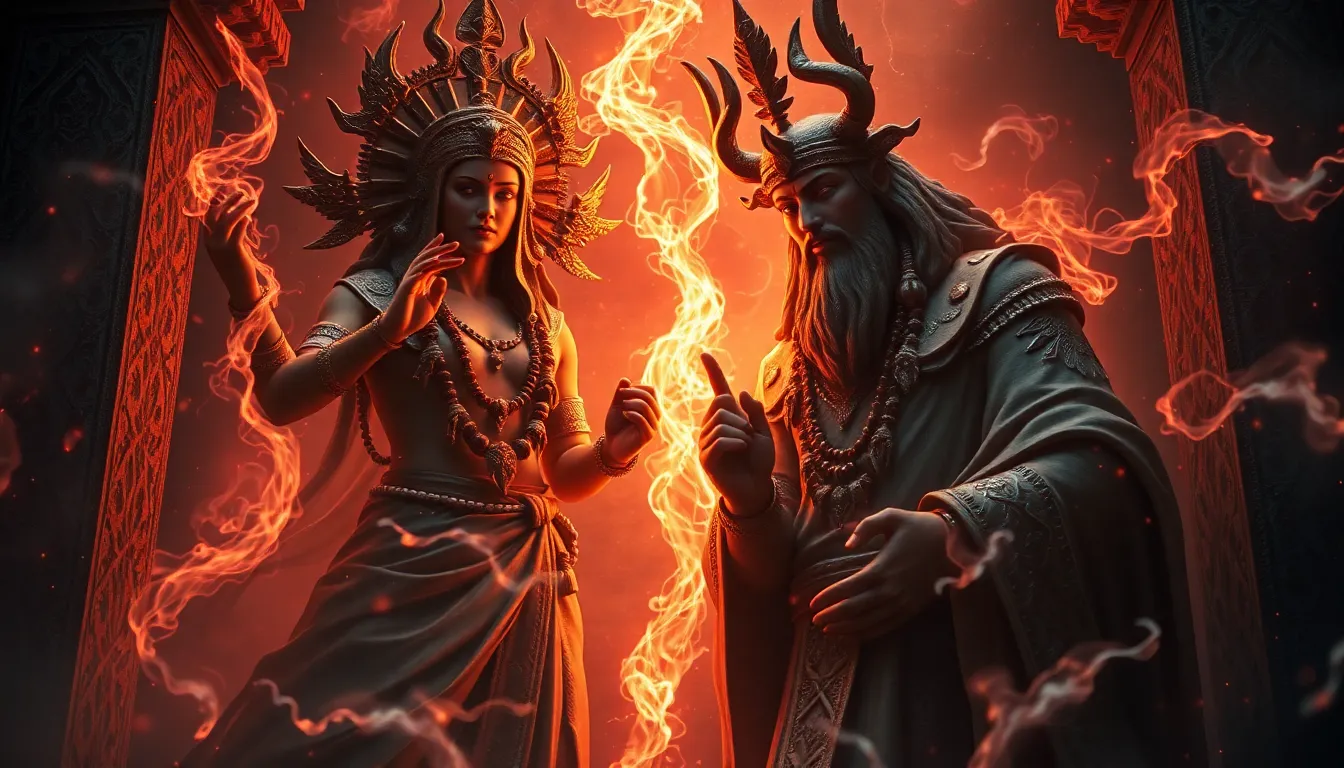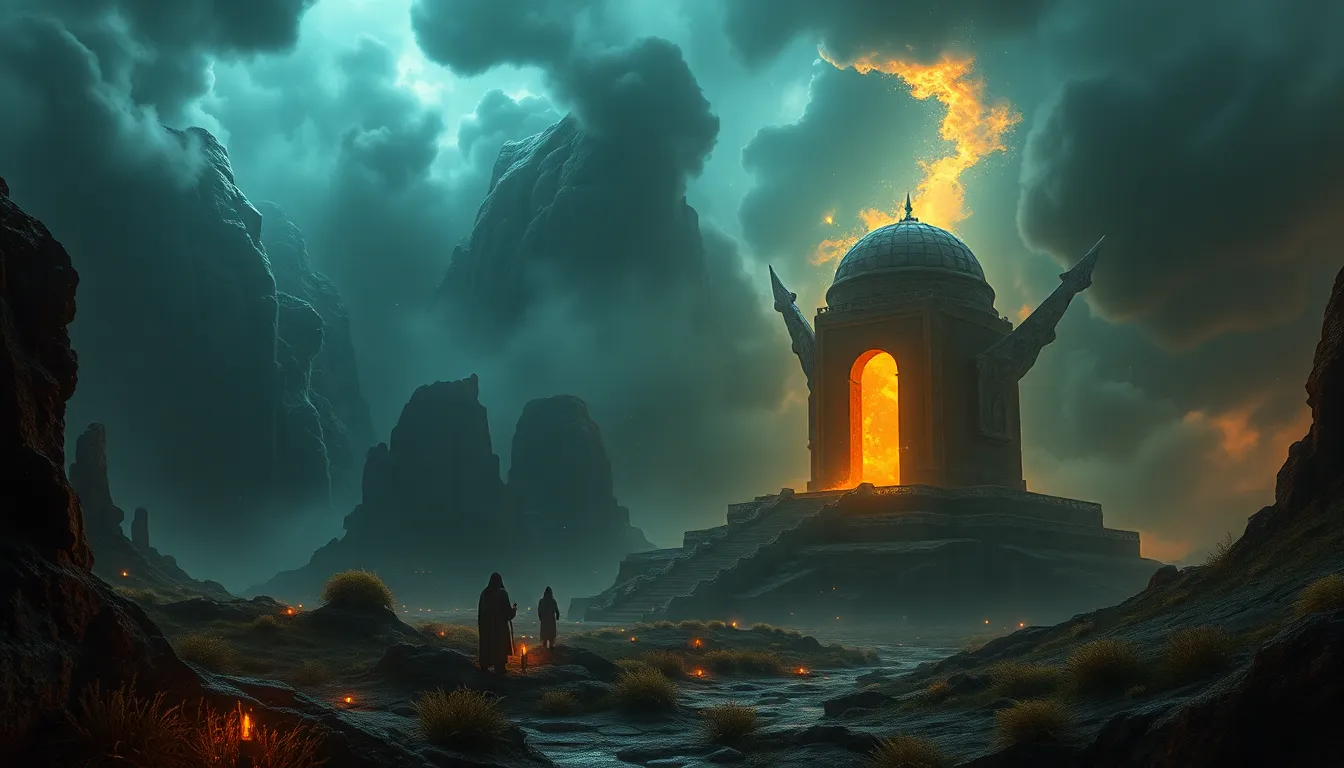The Enigmatic Lives of Ancient Deities: Myth vs. Reality
1. Introduction
Throughout history, ancient deities have played a crucial role in shaping cultures, beliefs, and societies. From the gods of Ancient Greece to the deities of Hinduism, these figures have inspired awe, fear, and reverence. This article aims to delve into the intricate relationship between myth and reality concerning ancient deities, exploring their significance, origins, and the lessons they imparted to their followers.
2. Defining Deities: What Makes a God?
Ancient deities are characterized by their divine nature, often embodying powerful forces of nature, morality, and existential themes. Across various civilizations, we can identify several common characteristics:
- Supernatural Powers: Deities possess abilities beyond human comprehension, such as controlling the weather or granting fertility.
- Anthropomorphic Traits: Many gods exhibit human-like qualities, including emotions, desires, and relationships.
- Symbolism: Each deity often symbolizes specific aspects of life or nature, such as love, war, wisdom, or the harvest.
In society and religion, gods served essential roles, including:
- Protectors: Deities often acted as guardians of cities, families, and individuals.
- Moral Guides: Myths surrounding deities frequently conveyed moral lessons and societal values.
- Ritualistic Figures: Deities were central to religious practices, influencing rituals, sacrifices, and festivals.
3. The Birth of Myths: How Deities are Created
The creation stories of deities vary significantly across cultures but often reflect the values and experiences of those societies. For example:
- Mesopotamian Myths: The Enuma Elish describes the birth of Marduk from the primordial waters, symbolizing order emerging from chaos.
- Greek Mythology: Zeus’s birth is marked by a struggle against his father Cronus, which reflects themes of rebellion and succession.
- Hindu Traditions: Deities like Vishnu are said to manifest in various avatars, illustrating the concept of divine intervention in human affairs.
The cultural and historical contexts surrounding these narratives reveal much about the societies that created them, encompassing their fears, hopes, and values.
4. The Dual Nature of Deities: Divine vs. Human Traits
One of the most fascinating aspects of ancient deities is their dual nature, often exhibiting both divine and human traits. This anthropomorphism allows followers to relate to the gods on a personal level. Notable examples include:
- Zeus: Despite being the king of the gods, Zeus is infamous for his numerous affairs and human-like flaws.
- Isis: In Egyptian mythology, Isis embodies motherhood and magic but also experiences grief and loss.
- Vishnu: Represents preservation in Hinduism, but as Krishna, he displays playful and mischievous human-like qualities.
This blend of traits serves to make deities more relatable and underscores the complexities of human nature.
5. Myths as Moral Lessons: The Purpose Behind Stories
Many ancient myths serve a dual purpose: entertaining and educating. They often incorporate profound moral or philosophical teachings. Examples include:
- The Epic of Gilgamesh: Explores themes of friendship, mortality, and the quest for eternal life.
- The Iliad: Offers insights into the nature of heroism, honor, and the consequences of pride.
- Hindu Epics: The Mahabharata and Ramayana address duty (dharma), righteousness, and the complexity of moral choices.
These stories have significantly impacted societal norms and values, shaping the ethical frameworks of their cultures.
6. Historical Evidence: What Archaeology Reveals About Ancient Deities
Archaeological findings provide tangible evidence of ancient deities, their worship, and rituals. Significant findings include:
- Temples: Structures dedicated to gods, such as the Parthenon in Athens, reveal the importance of worship in daily life.
- Artifacts: Statues, inscriptions, and pottery often depict deities, showcasing their characteristics and attributes.
- Ritual Objects: Items used in worship, like altars and offerings, provide insight into religious practices and beliefs.
Comparing these archaeological accounts with mythological narratives helps bridge the gap between myth and reality, highlighting the interplay between belief and practice.
7. The Evolution of Deities: From Worship to Folklore
Over time, the perception of deities has evolved. Many ancient gods transitioned from being central figures in religion to characters in folklore. This evolution can be observed in:
- Decline of Worship: As civilizations changed, the worship of certain deities diminished, often replaced by new belief systems.
- Cultural Folklore: Many deities became part of local folklore, retaining their stories but losing their divine status.
- Modern Adaptations: Ancient deities continue to inspire contemporary narratives in literature and art, often reinterpreted for modern audiences.
8. The Influence of Ancient Deities in Modern Culture
The legacy of ancient deities persists strongly in modern culture, influencing various forms of expression:
- Literature: Novels and poetry frequently draw on mythological themes and characters, reimagining their stories for new generations.
- Film: Movies like “Clash of the Titans” and “The Ten Commandments” depict ancient myths, showcasing their enduring appeal.
- Art: Artists continue to represent ancient deities, exploring their symbolism and significance in contemporary works.
Additionally, these figures have found a place in modern spirituality, where individuals may draw inspiration from their stories and characteristics.
9. Case Studies: Notable Deities Through History
In-depth exploration of specific deities reveals both their mythological significance and historical realities:
- Zeus: As the ruler of Mount Olympus, Zeus symbolizes authority and order but is also a cautionary figure representing the dangers of hubris.
- Isis: The goddess of motherhood and magic showcases the power of love and resilience, reflecting the societal reverence for femininity in Ancient Egypt.
- Vishnu: As a preserver, Vishnu’s avatars, like Rama and Krishna, illustrate the ideal virtues and the importance of dharma in human life.
10. Conclusion: Bridging the Gap Between Myth and Reality
Exploring the lives of ancient deities unveils rich insights into the human experience, culture, and morality. These figures, while rooted in myth, reflect the aspirations, fears, and values of the societies that birthed them. The enduring legacy of ancient deities continues to shape our understanding of human nature and culture, bridging the gap between the mythical and the real.



